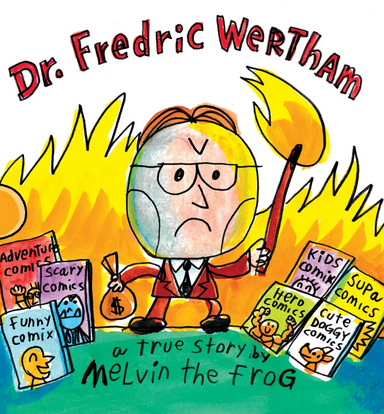Know, O children, that there was a time when coffee tables across the nation were covered with magazines – Saturday Evening Post, Ladies Home Companion, True, Look, Reader’s Digest. Field & Stream, and so many others – and those magazines carried a dozen or so gag cartoons in each and every issue. It was an age of laughter.
Those times have faded into the mists, but there are a few who still carry on the old ways.

The Daily Cartoonist gives props to The Magazine of Fantasy & Science Fiction for continuing their tradition of publishing a half dozen or so cartoons in each issue. Fist bumps and huzzahs!
CARTOONS: Lynn Hsu, S. Harris, Mark Heath, Arthur Masear, Nick Downes.
**********
A new adaptation of the classic novel Watership Down hit bookstores this week. Richard Adams’ debut novel was first published in 1972, and follows a band of rabbits led by Hazel and his soothsayer brother Fiver in search of their new warren as they avoid peril from humans, dogs and rabbits alike. It’s an allegory that, among many other things, explores the struggle between freedom and tyranny.
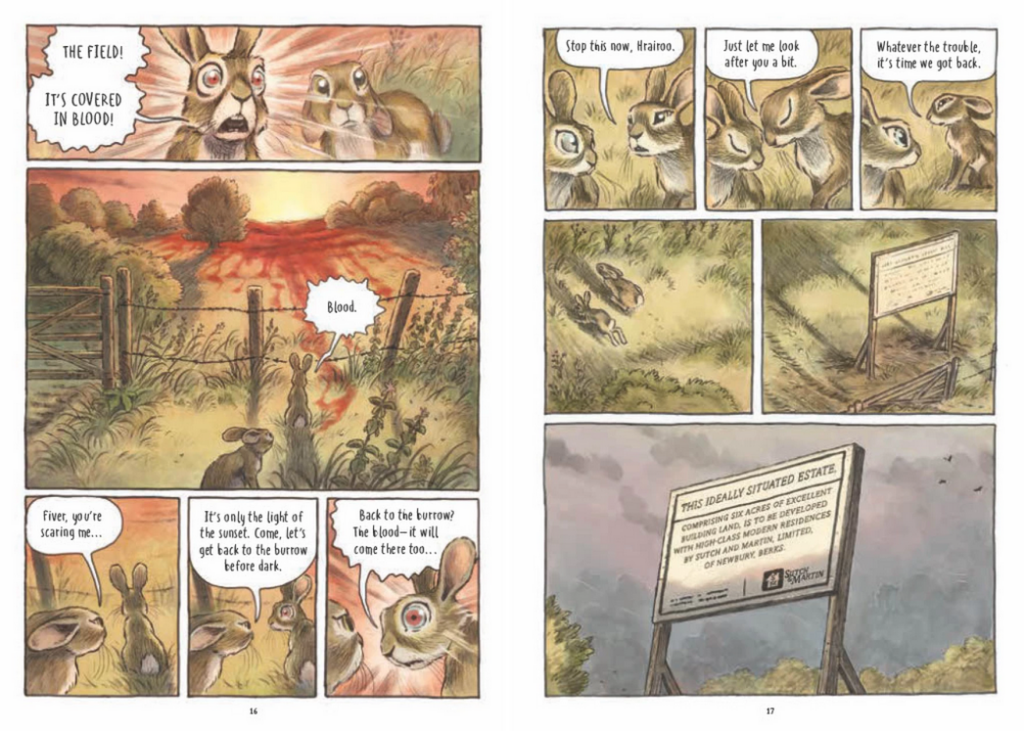
Vermont Public interviewed James Sturm who, with Joe Sutphin, adapted the novel into graphic novel form.
Well, in my proposal, I said that I’m going to be faithful to the book. As a cartoonist, I’m not some great stylist who is gonna bring the book into my orbit. I really wanted to serve the book and use it as a guide in every way that I could.
I was responsible for adapting the book, which means reading the text, deciding what gets depicted and what gets shown instead of written about. And I make a storyboard, and then I hand it over to [Joe Sutphin].
**********
A stop at the Billy Ireland Cartoon Library and Museum is like paying a visit to old friends. Hanging on the museum walls are huge framed cartoons of Lucy tormenting Charlie Brown, Beetle Bailey working his way under Sarge’s skin, and Hobbes crouching under Calvin’s school desk, whispering that the sum of 7 + 3 is 73.
In adjacent display cases, you’ll also find a Steve Canyon lunchbox, a Little Orphan Annie board game and decoder ring, and B. Kliban cat hats. Pull out some drawers beneath them to find copies of Mad magazine, a Captain Marvel comic book, and a cartoon correspondence course complete with a “Gag Master Wheel.” In yet another case, editorial cartoons of the 19th-century master Thomas Nast show how he created the elephant as the symbol of the Republican Party.
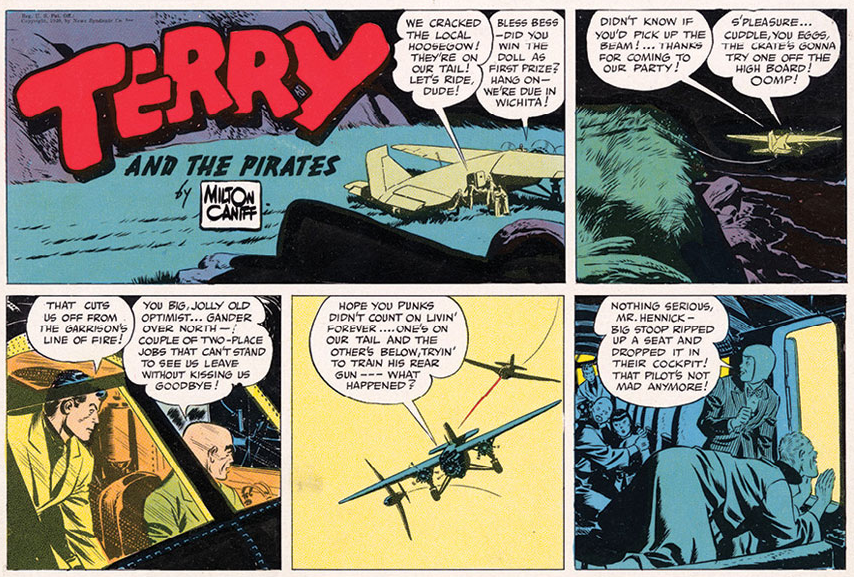
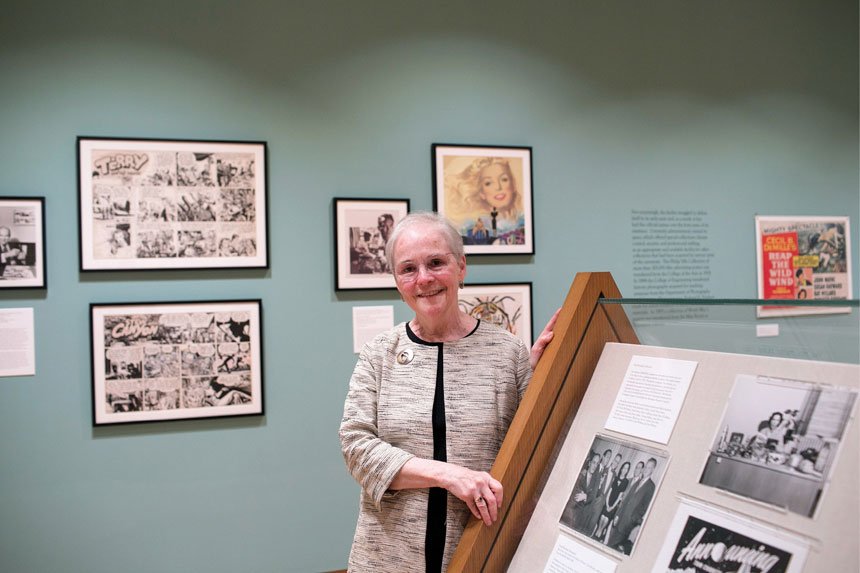
above: the most important Terry in comics and the most important Lucy for comics.
Speaking of the Saturday Evening Post and warrens, Rich Warren authors a feature article for the SatEvePost about the Billy Ireland Cartoon Library and Museum.
BICLM had its beginnings in 1977 when Ohio State alumnus Milton Caniff donated his entire work to his alma mater, including decades of his drawings of Steve Canyon and Terry and the Pirates. Lucy Shelton Caswell was given a six-month appointment by the School of Journalism to organize this vast collection. “Long story short — I stayed a lot longer than six months,” says Caswell, who eventually became curator of the cartoon library, dedicating herself to adding more content beyond Caniff’s donation.
**********
Oct 18, 2023
The THORN Kickstarter goes live at 12pm EST today!
At 9pm EST Jeff, who was asking for $30,000, has over $150,000 pledged for the comic strip book.
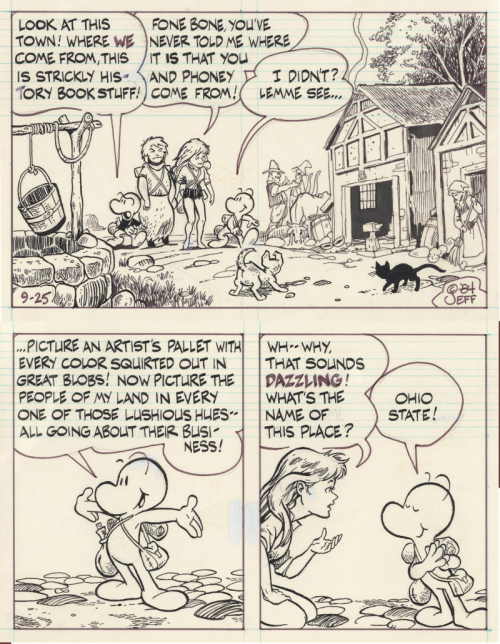
**********
KEUKA PARK — An expert on editorial cartoons took a Keuka College audience on a wide-ranging exploration of the issues tackled, techniques employed, and reactions elicited by today’s political cartoonists.
“It’s an effective way to comment on serious issues,” Elaine Miller told a crowd of about 60 at Lightner Library earlier this month. “People are much more likely to accept them if they come with humor.”
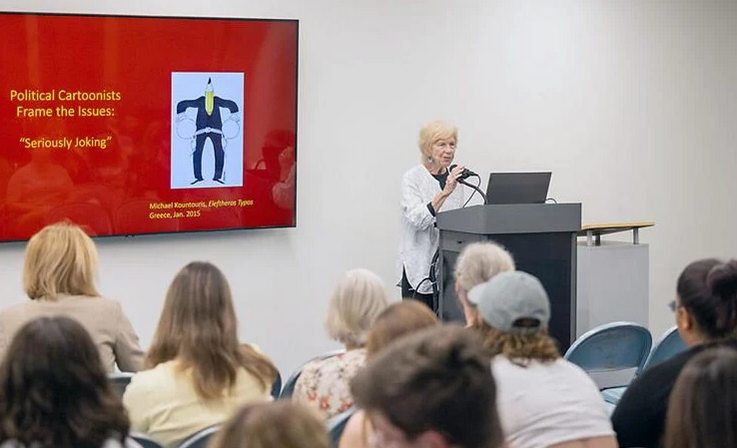
The Finger Lakes Times showcases Elaine Miller’s presentation on the power of political cartoons.
A lifelong educator who specialized in women’s studies and modern languages, Miller said she first became interested in political cartoons during the 1984 presidential election. That’s when Rep. Geraldine Ferraro became the first woman on a major party’s presidential ticket.
Miller also pointed out the historic lack of women among political cartoonists, turning the audience’s attention to two noteworthy exceptions: Trailblazer Etta Hulme of the Fort Worth Star-Telegram, who, in 1978, became the first female cartoonist to be nationally syndicated; and the much-honored Signe Wilkinson of the Philadelphia Daily News, who, in 1992, became the first woman to win a Pulitzer Prize for editorial cartooning.
**********
“Schools are the major socializing agent of the country,” Art Spiegelman said pointedly one recent evening across the river from Washington — which is why he’s so concerned about how they’ve become battlegrounds over books.
The author of “Maus,” the first graphic novel ever to win the Pulitzer Prize, had just spoken to high school students, then at a community event at a middle school hosted by the Arlington Public Library in Virginia, all ahead of Banned Books Week.
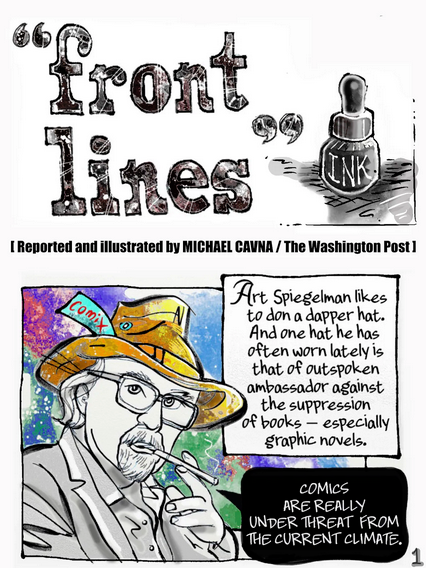
**********
The most popular comic in North America returns this fall – and in this latest installment, it’s taking on one of the comics industry’s greatest villains of all time.
In November 28’s Cat Kid Comic Club: Influencers, cartoonist Dav Pilkey is taking on Dr. Fredric Wertham, the mid-20th century psychiatrist who promoted the idea that comics (be it comic books, comic strips, or whatever) caused children and youth to descend into a life of crime and immorality.
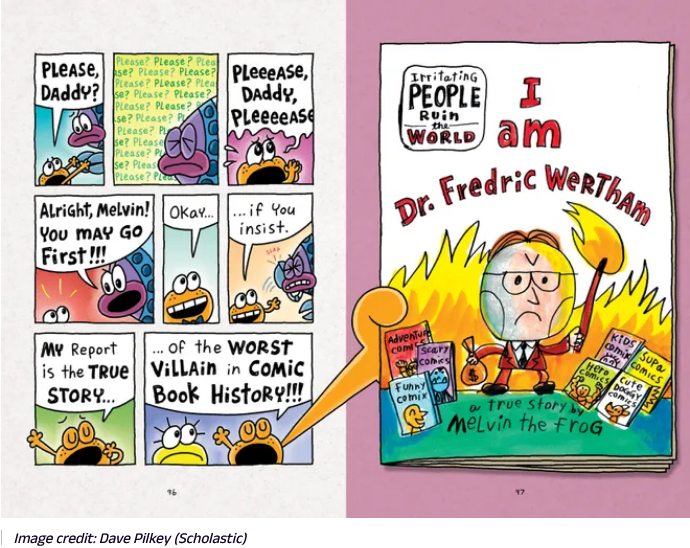
Dav Pilkey talks to Popverse about what’s included in his newest million selling comic book.
“In Cat Kid Comic Club: Influencers, I included the story of Dr. Fredric Wertham, so that kids see how misinformation can have devastating effects that can last for generations,” Pilkey told Popverse.
